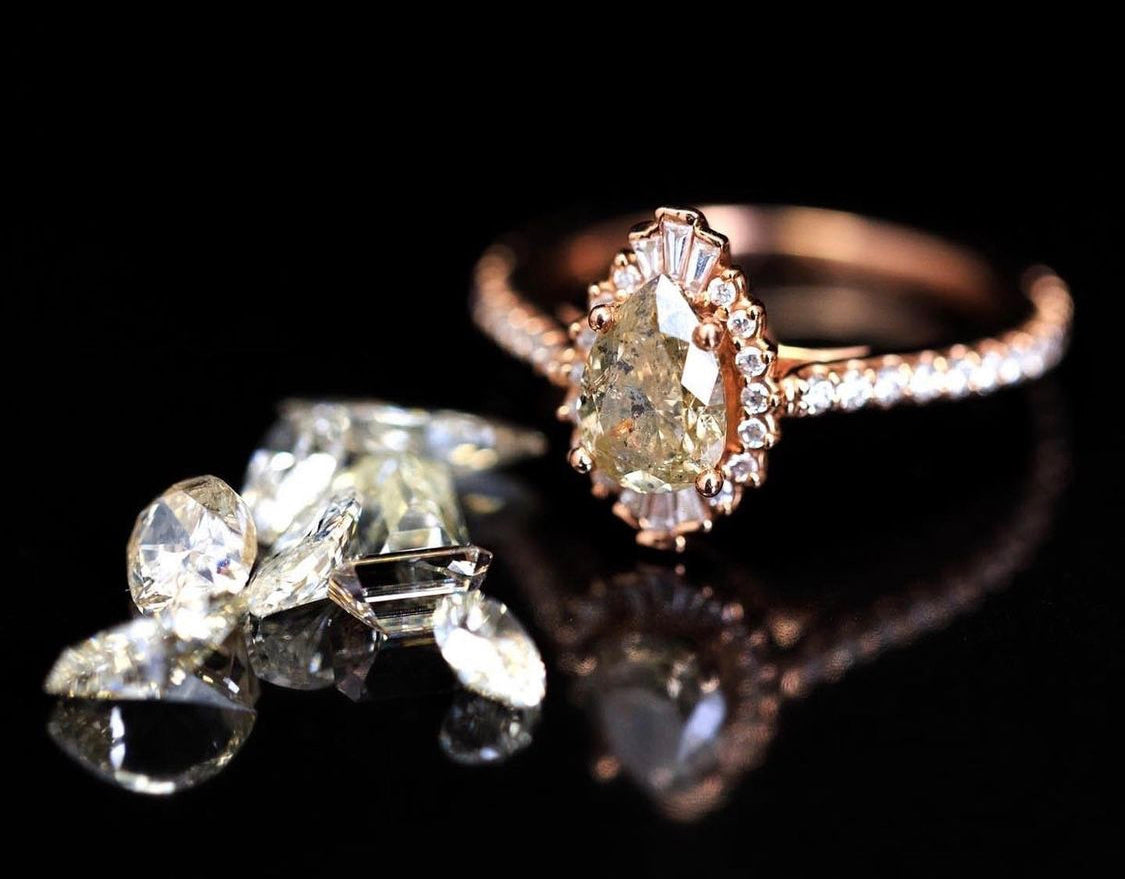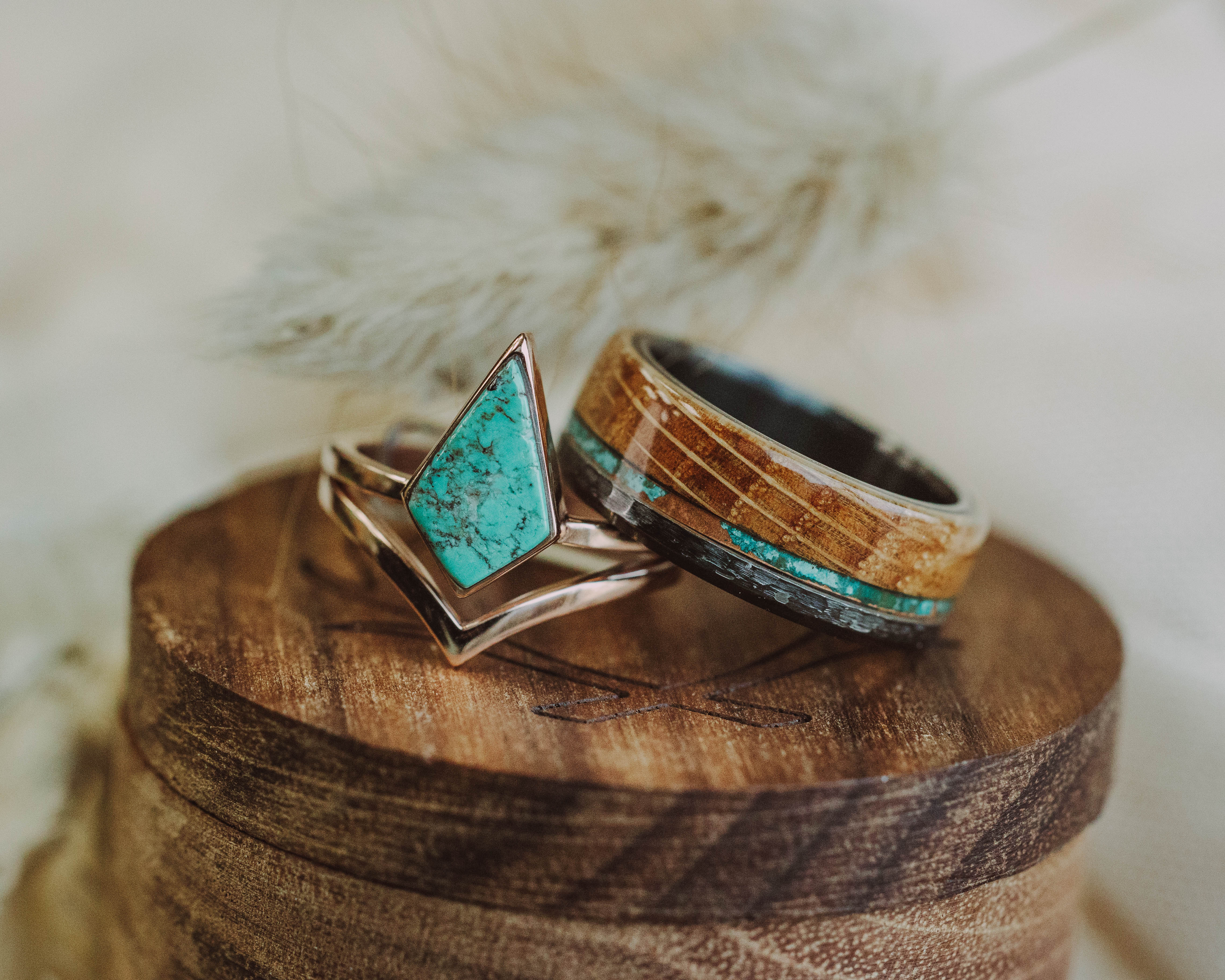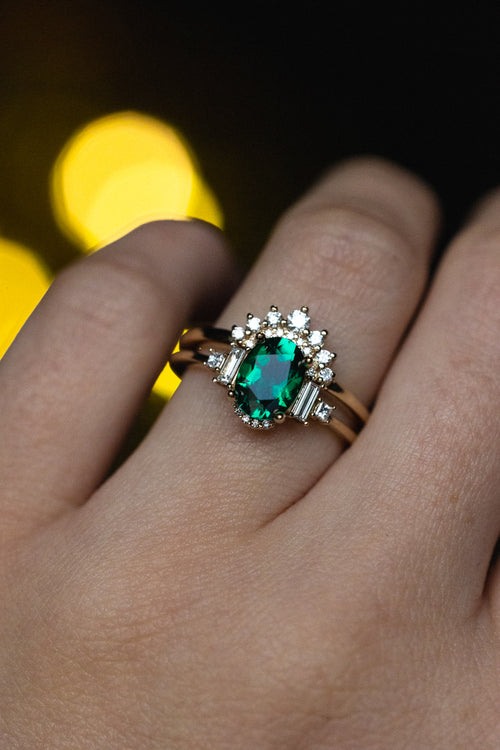
Ethical, Sustainable & Conflict Free Jewelry
Ethical and responsible sourcing has become more important to us than ever! Criticized for unfair human labor, unsafe mining that harms the environment and workers, sourcing from areas of conflict, and other shady practices, the jewelry industry has been receiving pressure to increase transparency and find ways to mine materials safely & ethically. Staghead Designs strives to use materials that you can feel good about buying and wearing by only using materials collected and mined from reputable sources that follow strict human rights regulations and are conflict-free. Whether it’s wood, antler, or gems, you can rest assured that we are acquiring materials that are ethically & sustainably sourced. We will continue to look for new ways to show transparency & responsibility while also increasing our efforts towards sustainability.
Sourcing Antler, Wood & Other Natural Materials
We use antler for many of our ring designs! We love the unique and natural look it provides and how these wild materials resonate with our clients. All of our antlers are collected using a permit after being naturally shed by a living animal. Deer, elk, and other antlered animals shed their antlers every winter before growing a new pair in the spring. Antler shedding is a natural process that happens regardless of human interaction or influence. These antlers can be collected by shed hunters within a specific period and in designated areas that will not disturb the animals feeding, mating, or migration patterns. We source our antlers from Utah shed collectors, all of which are required by the state to take an antler collecting ethics course. Our antler is typically from elk, but we can also use deer, moose, and other antlered animals.
We also use many different types of woods in our various designs and source others for custom requests. We choose only to work with reputable companies that supply us with options that are as sustainable as possible. For example, our Redwood is sourced from old-growth and deadfall, ensuring that no healthy Redwood trees are removed or harmed when creating a ring. Our ironwood is legally sourced from Arizona and is collected using permits, with significant consideration to sustainability and the environment. We also make a lot of our designs using oak from recycled whiskey barrels.

We do not work with and will not accept materials from endangered or restricted species and animals, including but not limited to elephant ivory, coral, etc. We also do not work with meteorites because of their potential to rust over time. We do not work with dinosaur fossils or bones as these materials can be radioactive or pose other health risks to our artisans.
We also encourage our clients to send in materials that are meaningful to them, to be used in their rings. With this encouragement we ask that they not provide us with any materials that were obtained in an unethical or illegal way.
**Please note - because ironwood, antler, and many other materials we use are natural, each ring is expected to vary in appearance from the listing images on the site. You are always more than welcome to put specific requests in the NOTES TO SELLER section at checkout for a particular look you are hoping for in a material. However, keep in mind that we can never guarantee a specific outcome as these materials cannot be controlled. We will do our best, however, to accommodate special requests!
Whether you're looking for a camo ring, patina copper, or other natural Misc. material rings, our artisans will help you design the ring of your dreams.
Ethical Gems
When we source gems, we choose to create relationships with people and businesses who share the same commitment to ethics and sustainability. Our goal is to always work with Fair Trade Gem sources, green manufacturers and only attend trade shows that require vendors to be certified as ethical and conflict-free. Fair Trade Gems are those that have been mined following strict protocols.
Conflict-Free Sourcing
There are many issues surrounding Diamond and other gemstone mining, including “blood Diamonds”, which are Diamonds sold out of conflict and war zones to fund violent or anti-government radical groups. Rubies and Emeralds also have a reputation of sometimes being conflict gems. One way to determine if a gem is ethical and conflict-free is to look at the source. Countries like the United States, Canada, Australia, and other countries like this follow strict guidelines and regulations in their mining procedures. Most of our gems and precious metals are sourced from mines inside the United States and Canada, or they are lab-grown:
- Our Salt and Pepper Diamonds typically come from the U.S. and Canada.
- Our pink Diamonds come from the Argyle Mine of Australia.
- Most of our Sapphires are from Montana.
- Our Turquoise is typically from the Southwestern U.S., such as Arizona and Nevada.
- Most of our Rubies, Emeralds, and Alexandrite stones are lab-grown/Chatham unless otherwise requested.
- We prefer to use Moissanite over white diamond center stones.
- Our gold is locally sourced (U.S.).
Lab-Grown vs. Natural
We work with lab-grown Moissanite, Alexandrite, Emerald, Ruby, and Sapphire. Lab-grown gems are generally considered ethical because they do not involve mining and avoid environmental and humanitarian issues associated with mining. There can also be other perks to lab-grown stones - Moissanite is a great example. Moissanite is lab-grown and has a higher refractive index than diamond while having nearly the same hardness level, meaning the stone is durable and has more sparkle than a diamond. In addition, Moissanite is a fraction of the price of natural Diamonds!
Lab-grown gems are created by replicating the environment from which natural gems form. This includes heat, minerals, chemicals, and pressure conditions. Over time, crystals form to create a gem that is chemically and physically the same as the natural gem it is replicating. Lab-growing is essentially a sped-up process of nature! These gems are still the real deal - high-quality and pure at a fraction of the monetary, environmental, and humanity costs!

For example, this “Romona” engagement ring features a 1ct round cut, Moissanite center stone that is more brilliant and just as durable as a natural diamond that would be exponentially more expensive. The best part is that only an expert with a loop has a chance of telling the difference! Not only that, if looked at under a loop, Moissanite appears flawless when even high quality white Diamonds will generally possess at least trace inclusions.
There are also perks involved with natural gemstones. Mining provides jobs and income for many people worldwide who rely on this work for their livelihood.
The key with natural gemstones is to ensure they are coming from a reputable source that is ethical and responsible in order to reduce the carbon footprint and other effects of mining.
Natural gemstones are formed over thousands to millions of years and are very rare, and some people appreciate the authenticity of such a gemstone. One of the biggest perks of natural stones is that because the stones are untreated, inclusions and flaws can appear that make them one-of-a-kind! Salt and Pepper Diamonds are a great example of this and showcase just how unique natural gemstones can be!

This 2.31ct kite rose cut Salt and Pepper Diamond from the Staghead Mine shows beautiful dark inclusions!
Creating Ethical Jewelry
If you’d like to design a piece of jewelry that not only looks great but also allows you to feel great about what you are buying and wearing. Staghead Designs would be honored to make you a custom piece! Click here to view our collections of custom handcrafted rings or here to see our once-in-a-lifetime ethical stones in the Staghead Mine.



